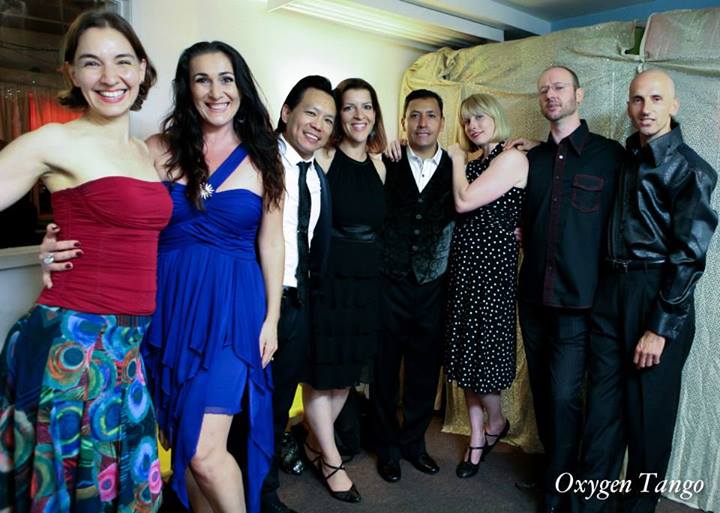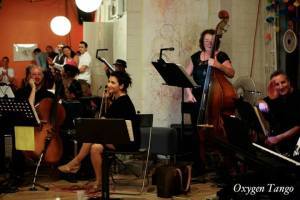Why Women Should Learn To Lead In Tango
/Note: Coming from a great conversations with fellow dancers, I think it's more accurate to retitle the article: "How dancers who want to become excellent at following in Tango can benefit from learning to lead." 7/23/13
Here in Mar Vista, it is wonderous exciting to be surrounded by a lot of nice dancers who dance both roles fluently. It makes practicas super productive and fun and raises the level of Tango dialogue exponentially.
Yet, since I teach beginners quite a lot, I often hear newer students wondering, "Why, oh why, shall I learn the goshdarned other role? That seems so hard and unnecessary !"
There is plenty of info and lore out there about why leaders can benefit from learning to follow. There is perhaps more mythology and cogitation about why followers should NOT learn to lead. All this sparked me to really articulate the reasons why I encourage beginner women to learn the basics of leading.
There are basically two big reasons as I see it. One has to do with the value it brings to your following (and your learning how to follow well), and the other has to do with the value it brings to your experience of Tango community and culture as a whole.
Value to your Dancing and Learning Process As A Follower
- Through leading a little bit you will understand how it feels to lead someone who doesn’t follow well -- who guesses, who moves without power, who doesn’t really dance, who is distracted or busy, who doesn’t keep her balance and alignment, whose embrace is heavy or uncomfortable as a result. Being more aware and sensitive to these things will make you less likely to do them when you follow. And when you get feedback from leaders or teachers, you will understand it better and know why it matters.
- When things don’t work, in classes or practicing, you will know how to focus the couple’s attention on techniques like “Leader’s Invitation” and “Follow The Follower” which make the whole dance and learning process more comfortable for you.
- You can learn details about how to refine your following, through simply leading advanced followers and teachers in the most basic of material (walking, ochos) and noticing what they feel like and do when they follow. It is very often more efficient and direct for you to actually feel what they do and have a kinaesthetic experience, than for them to try to explain it to you in words. Often intermediate followers experience a learning plateau and this can help you move past it more quickly.
- Dancers tend to become more actively engaged with the music and sensitive to it when they lead, since they are making active choices to fit the couple’s movements to the music. Becoming more sensitive to the music will make you a better follower.
- A great deal of leading involves following -- paying attention to what the follower has done, and “Following the Follower.” So these skills are directly transferable.
Value To You As A Community Member
- You will have more in common with your leaders -- common vocabulary, common experiences, common challenges -- and find a social connection with them more easily. When men are the only ones who have skill/information in leading, I have seen this can lead to an uneven dynamic that can become distorted and hierarchical, and culturally this undermines the connection between dancers. I have seen how, when both men and women learn the whole system of the dance, the culture stays healthy, communicative and collaborative.
- When women get to know each other through the natural bonds that are created through dancing together, this makes the possibility of negativity and competitiveness between women -- which undermines community and learning -- less likely. It can foster invaluable friendships between women who support each other through the journey of being a Tango follower.
- If you lead even a little bit, you will have a way to learn, participate, dance and create fun in situations (intermediate and advanced classes, practicas, milongas and festivals) when there are more followers than leaders, which happens very often in Tango.
That’s my take on it. I would love to hear your comments and responses to all this !
Oh, and did I mention that you will have way more cred with great dancers if you lead as well as follow ? I think I did not mention that ! Hm. You. Will. Have. WAY. More. Cred. And more to talk about. Including, the Tango Fairytale Game. Good luck and love, Mitra
Photo by Andrei Andreev
 Mitra Martin is Co-Founder of Oxygen Tango School with Stefan Fabry. She dances with vavoom, leads a mean ocho cortado, and almost considers herself "INT-ADV."
Mitra Martin is Co-Founder of Oxygen Tango School with Stefan Fabry. She dances with vavoom, leads a mean ocho cortado, and almost considers herself "INT-ADV."











